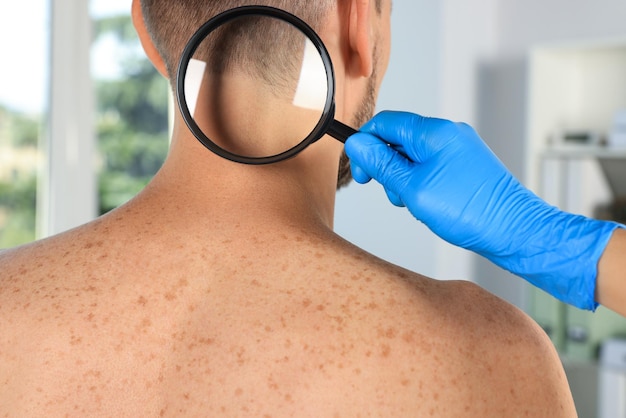
Introduction
Have you ever wondered about those mysterious, often intriguing, marks on your skin or someone else’s? Birthmarks have fascinated humans for centuries, and their origins remain a topic of curiosity and intrigue. In this article, we will delve into the intriguing world of birthmarks, exploring how and why they form. Join us on this journey to uncover the secrets behind these unique skin markings.
Understanding Birthmarks
Before we dive into the nitty-gritty of how birthmarks form, let’s begin by understanding what birthmarks are and the different types that exist.
What Are Birthmarks?
Birthmarks are pigmented or vascular anomalies that appear on the skin at or shortly after birth. They come in various shapes, sizes, and colors, and while they are usually harmless, they can vary significantly in appearance.
Types of Birthmarks
There are two primary categories of birthmarks: pigmented and vascular.
1. Pigmented Birthmarks
- Café-au-Lait Spots: These are light brown in color and often oval-shaped.
- Mongolian Spots: These appear as blue or grayish patches, typically on the lower back or buttocks.
- Nevus (Mole): A common type of pigmented birthmark that can be present at birth or develop later in life.
2. Vascular Birthmarks
- Port-Wine Stains: These are flat, pink, red, or purple marks caused by abnormal blood vessels.
- Strawberry Hemangiomas: Raised and bright red, these birthmarks often appear shortly after birth.
- Salmon Patches: Also known as “angel’s kisses” or “stork bites,” these are flat, pink patches that usually fade over time.
The Science Behind Birthmark Formation
Genetic Factors
Many birthmarks have a genetic component, meaning they can be passed down through generations. Genetic mutations can lead to an overgrowth of cells or blood vessels in specific areas of the skin, resulting in birthmarks.
Vascular Birthmarks
Vascular birthmarks, such as port-wine stains and hemangiomas, occur due to irregularities in blood vessel development. These anomalies can lead to an excess of blood vessels in a particular area of the skin, causing the characteristic discoloration.
Pigmented Birthmarks
Pigmented birthmarks, on the other hand, are typically the result of an overproduction of melanin, the pigment responsible for skin color. Genetic factors can influence melanin production, leading to the formation of moles and café-au-lait spots.
Environmental Factors
While genetics play a significant role in birthmark formation, environmental factors can also contribute. Exposure to certain chemicals or toxins during pregnancy may increase the likelihood of a child developing birthmarks.
Can Birthmarks Be Removed?
Laser Therapy
In some cases, individuals may choose to have their birthmarks removed for cosmetic reasons or if the birthmark poses a medical concern. Laser therapy is a common method used for this purpose, which can help reduce the appearance of vascular birthmarks.
Surgical Removal
For larger or more complex birthmarks, surgical removal may be necessary. This procedure is typically performed by a dermatologist or plastic surgeon and may leave a scar.
Conclusion
In conclusion, birthmarks are unique and often mysterious skin markings that can vary in appearance and origin. While genetics and environmental factors play a significant role in their formation, the exact cause of birthmarks remains a subject of ongoing research and fascination.
If you or someone you know has a birthmark, remember that they are usually harmless and add to the uniqueness of each individual. Embrace your skin’s distinctive features, for they tell a story that is uniquely yours.
FAQs
1. Are all birthmarks present at birth?
No, not all birthmarks are present at birth. Some may develop later in childhood or even adulthood.
2. Can birthmarks change in appearance over time?
Yes, some birthmarks, particularly moles, can change in size, shape, or color over time. It’s important to monitor any changes and consult a dermatologist if you notice any abnormalities.
3. Are birthmarks hereditary?
Some types of birthmarks, especially pigmented ones, can have a hereditary component. If your family has a history of certain birthmarks, you may be more likely to develop them as well.
4. Are birthmarks a cause for medical concern?
While most birthmarks are harmless, some may require medical attention if they pose a risk of bleeding, infection, or other complications. Consult a healthcare professional for guidance.
5. Can birthmarks be completely removed?
The complete removal of a birthmark depends on its type, size, and location. While some birthmarks can be significantly reduced or lightened, complete removal may not always be possible.
